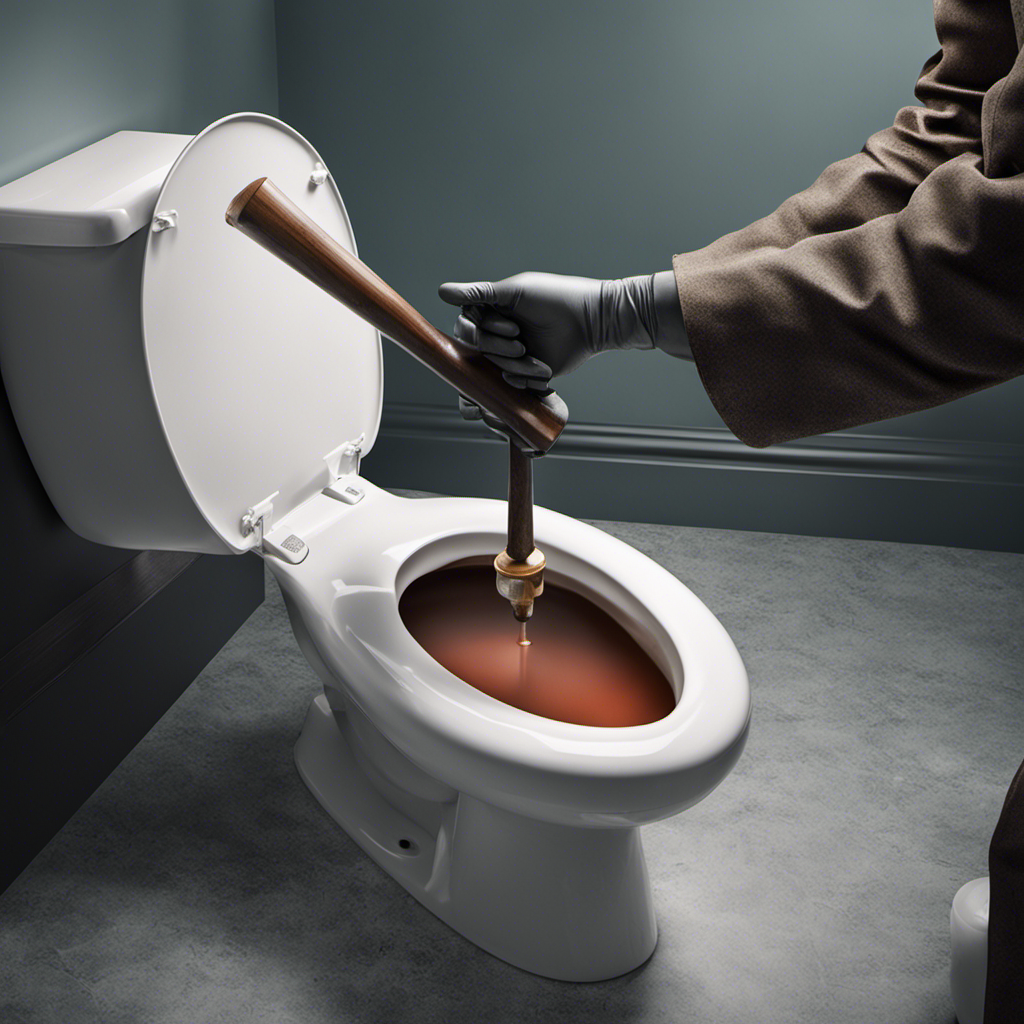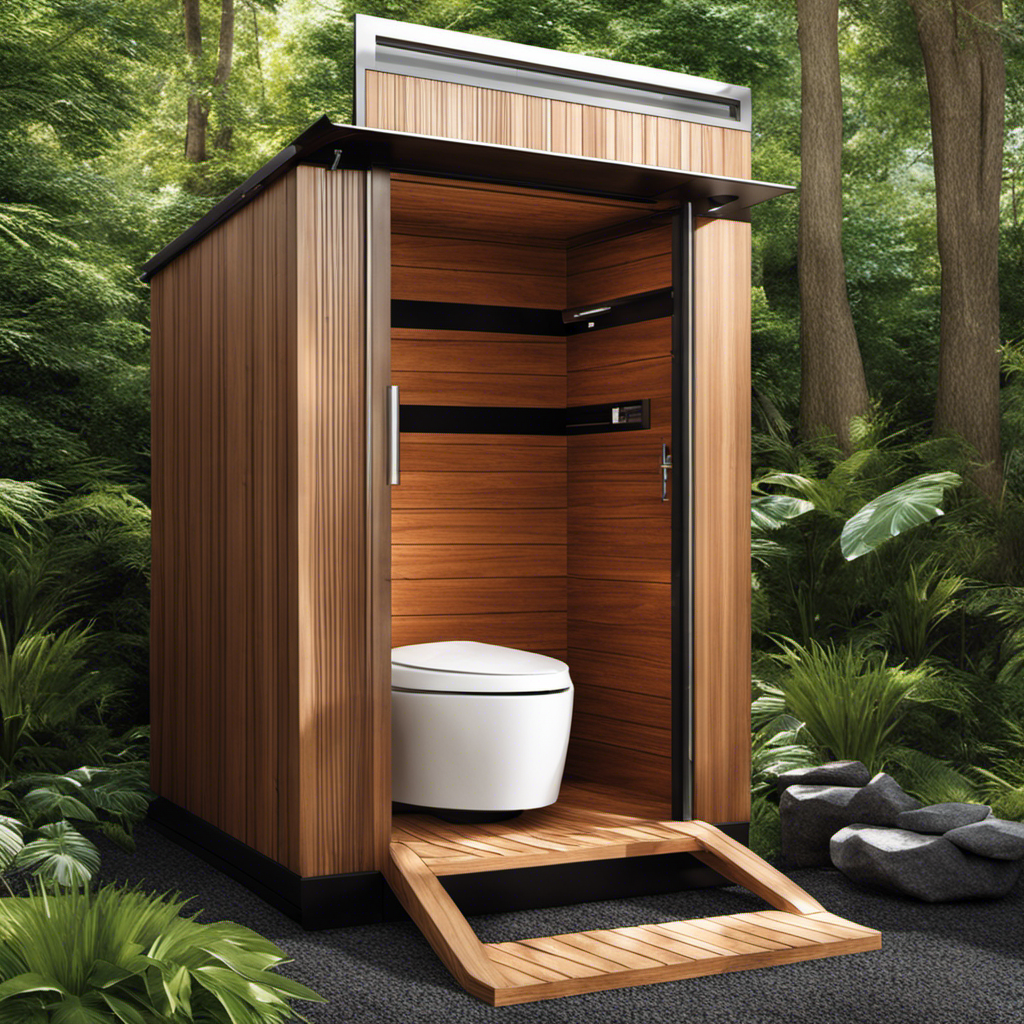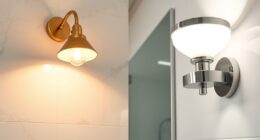Did you know that nearly 28% of the U.S. coastal waters are designated as No Discharge Zones?
As a boater, it is crucial to understand the regulations and requirements in these areas, especially if your marine toilet has a ‘Y’ valve.
In this article, I will guide you through the legal obligations, proper disposal methods, and maintenance tips to ensure compliance with No Discharge Zones.
Let’s dive in and minimize our environmental impact together.
Key Takeaways
- Marine toilets with a ‘Y’ valve must be locked in the closed position in No Discharge Zones.
- Marine toilets in No Discharge Zones must be equipped with a holding tank.
- Holding tanks must be emptied at designated pump-out stations onshore.
- Compliance with regulations prevents negative impact on the marine ecosystem.
Understanding No Discharge Zones
If your marine toilet has a ‘y’ valve, what must you do in a no discharge zone?
Understanding regulations and their impact on marine life is crucial in these areas. In a no discharge zone, it is prohibited to discharge any treated or untreated sewage into the water. This means that if your marine toilet has a ‘y’ valve, you must ensure that it is locked in the closed position while in a no discharge zone.
This prevents any accidental discharge of sewage into the water. By following this regulation, we can minimize the negative impact on marine life and help maintain the cleanliness and health of our oceans and waterways.
It is our responsibility as boaters to be aware of and comply with these regulations to protect our environment.
The Role of a ���Y��� Valve in Marine Toilets
To comply with regulations in a no discharge zone, it is important to understand the role of the ‘Y’ valve in your marine toilet.
The ‘Y’ valve is an important component that allows you to divert waste either overboard or into a holding tank. Proper maintenance of the ‘Y’ valve is crucial to ensure its functionality.
Regularly inspect the valve for any signs of wear or damage, and clean it to prevent clogs or blockages. If you need to install a ‘Y’ valve, follow the manufacturer’s instructions carefully to ensure proper installation.
It is important to note that in a no discharge zone, it is illegal to discharge any wastewater, including treated sewage, overboard. Therefore, understanding the role of the ‘Y’ valve is essential to comply with the legal requirements for marine toilets in no discharge zones.
Legal Requirements for Marine Toilets in No Discharge Zones
Understanding the legal requirements for marine toilets in no discharge zones is crucial for compliance. When operating a vessel in these designated areas, it is important to be aware of the regulations to avoid potential penalties.
In a no discharge zone, it is typically prohibited to discharge any sewage, including from marine toilets. To comply with the regulations, it is necessary to have a marine toilet equipped with a holding tank. This tank collects the sewage and must be emptied at a designated pump-out station onshore.
Failure to comply with these regulations can result in severe penalties, including fines and the loss of boating privileges. Therefore, it is essential to have a thorough understanding of the regulations and to ensure proper disposal of sewage in no discharge zones.
Proper Disposal Methods for Waste in No Discharge Zones
When it comes to waste disposal in no discharge zones, there are several important factors to consider.
First and foremost, understanding the waste pump-out options available is crucial for compliance with regulations.
Additionally, it is essential to be aware of the legal consequences that can arise from non-compliance, as violations can result in substantial fines and penalties.
Lastly, it is vital to recognize the environmental impact of discharge and the potential harm it can cause to marine ecosystems, emphasizing the importance of proper waste disposal methods.
Waste Pump-Out Options
Using a waste pump-out station is a convenient option for disposing of waste in a no discharge zone. These stations are specifically designed to safely remove and transport waste from marine toilets. Here are three reasons why waste pump-out stations are a reliable choice for waste disposal:
-
Efficient and hygienic: Waste pump-out stations use powerful pumps to quickly and effectively remove waste from the holding tank of your marine toilet. This ensures that waste is disposed of in a sanitary manner, reducing the risk of contamination.
-
Environmentally friendly: Pump-out stations are designed to prevent the discharge of waste into the water, which helps protect the marine environment. By using a pump-out station, you are actively contributing to the preservation of our oceans and waterways.
-
Convenient and accessible: Pump-out stations are typically located in marinas and other designated areas, making them easily accessible for boat owners. Many stations offer convenient features such as hoses and nozzles for efficient waste removal.
Legal Consequences for Non-Compliance
The legal consequences for not complying with waste disposal regulations can be severe. As a boat owner, it is crucial to understand the penalties that can be imposed for improper waste disposal.
Failure to comply with these regulations can result in hefty fines, legal action, and damage to the environment. The consequences can vary depending on the jurisdiction and the severity of the violation. Penalties may include monetary fines, suspension or revocation of permits, and even imprisonment in extreme cases.
It is essential to familiarize oneself with the specific waste disposal regulations in your area and ensure compliance to avoid these negative consequences. By following proper waste disposal practices, we can protect our waterways and avoid the potential penalties that come with non-compliance.
Environmental Impact of Discharge
To prevent harm to the environment, be aware of the impact of discharge from your boat. Discharging waste into the water can have serious ecological consequences. It is important to understand and follow discharge regulations to minimize these effects.
Here are some key points to consider:
-
Pollution: Discharging untreated waste can introduce harmful bacteria, nutrients, and chemicals into the water, leading to water pollution and potential harm to aquatic life.
-
Eutrophication: Nutrient-rich discharge can cause excessive algae growth, leading to eutrophication. This process depletes oxygen levels in the water, harming fish and other organisms.
-
Habitat destruction: Discharge can damage fragile ecosystems such as coral reefs, seagrass beds, and wetlands, affecting the overall health and biodiversity of these habitats.
Maintaining and Upgrading Marine Toilets in Compliance With No Discharge Zones
When it comes to maintaining and upgrading marine toilets in compliance with no discharge zones, it is important to consider Y valve alternatives and proper waste disposal methods.
Y valve alternatives are essential because they allow for the diversion of waste to holding tanks instead of being discharged directly into the water.
Furthermore, proper waste disposal ensures that waste is disposed of in a way that is environmentally friendly and compliant with regulations, preventing any negative impact on the marine ecosystem.
Y Valve Alternatives
Instead of using a y valve, you can consider using alternative options for your marine toilet in a no discharge zone. These alternative solutions provide eco-friendly options that comply with regulations while still maintaining the functionality of your marine toilet. Here are three options to consider:
-
Holding Tank: A holding tank is a self-contained unit that stores waste until it can be properly disposed of at a pump-out station. It is a simple and effective solution that ensures no discharge occurs in sensitive areas.
-
Composting Toilet: A composting toilet uses natural processes to break down waste into compost. It is a great eco-friendly option that eliminates the need for water and can be used in no discharge zones.
-
Vacuum Flush System: A vacuum flush system uses minimal water and creates a strong vacuum to remove waste from the toilet bowl. It is a hygienic and efficient option that can be used in no discharge zones.
Proper Waste Disposal
One option for proper waste disposal is using a holding tank. This method allows me to store waste until I can properly dispose of it at a pump-out station. Using a holding tank is an essential part of marine sanitation and promotes eco-friendly boating practices.
By utilizing a holding tank, I can prevent the discharge of waste directly into the water. This is important because it can have harmful effects on the marine ecosystem. Holding tanks are specifically designed to securely contain waste and can be easily emptied at designated pump-out stations. This ensures that waste is dealt with in a responsible and environmentally conscious manner.
Implementing proper waste disposal practices, such as using holding tanks, is crucial for maintaining the cleanliness and health of our waterways.
Tips for Boaters to Minimize Environmental Impact in No Discharge Zones
To minimize environmental impact in no discharge zones, it’s important for boaters to follow tips and guidelines. Boater education plays a crucial role in understanding the regulations and practices to protect our waterways. Additionally, using eco-friendly products can greatly reduce the harm caused by discharges.
Here are three important tips to consider:
-
Install a holding tank: Having a properly sized holding tank on board allows for the safe storage of waste until it can be properly disposed of onshore.
-
Use biodegradable products: Opt for eco-friendly toilet paper, cleaning agents, and other products that are specifically designed to break down easily and minimize harm to the environment.
-
Pump out regularly: It’s essential to pump out the holding tank at designated facilities to ensure that waste is properly disposed of and doesn’t end up in the water. Regular pump outs help maintain a clean and healthy marine environment.
Resources and Support for Boaters in No Discharge Zones
Boaters in no discharge zones can access helpful resources and support to ensure they are following the necessary regulations and practices. Boater education is crucial in understanding the impact of waste discharge on the environment and the importance of alternative sanitation methods. By utilizing these resources, boaters can make informed decisions and minimize their environmental footprint.
To assist boaters in navigating the regulations and adopting alternative sanitation practices, a variety of resources are available. These include educational materials, online courses, and guidance from local authorities. By taking advantage of these resources, boaters can gain a comprehensive understanding of the regulations and learn about the various alternative sanitation options available to them.
In addition to educational resources, boaters can also seek support from organizations and agencies dedicated to protecting water quality. These entities can provide guidance on best practices, offer technical assistance, and help boaters find appropriate facilities for waste disposal.
Conclusion
In conclusion, it’s absolutely imperative that we fully understand and comply with the regulations of No Discharge Zones when it comes to our marine toilets. The presence of a "Y" valve requires us to take swift action and ensure proper disposal methods are followed.
We must consistently maintain and upgrade our marine toilets to meet the standards set forth in these zones. By doing so, we can minimize our environmental impact and protect the delicate ecosystems that we are fortunate to explore.
Let us navigate the waters with responsibility and respect, for the sake of our planet and future generations.










